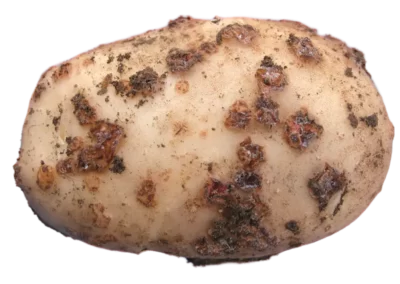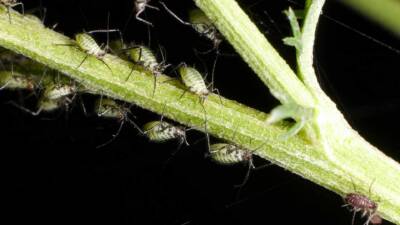This article is meant to provide insights gleaned from various studies I’ve come across, concerning the control of cucumber beetles. These pests, notorious for attacking all cucurbit plants, can also transmit bacterial wilt, Erwinia tracheiphila. The article highlights the life cycle of cucumber beetles and offers several organic methods for managing them, including links to the studies where the information was obtained.
Cucumber beetles overwinter in the soil near their host plants, emerging in the spring to feed on cucurbits and mate. They damage plants by feeding on roots, flowers, fruit, and leaves. Most importantly, they transmit diseases, namely bacterial wilt, which resides in the gut of the overwintering beetles, ready to infect the following year’s crop.
These beetles are prolific egg layers. Spotted cucumber beetles lay around 300 eggs per season, while striped beetles, Acalymma vittatum, produce up to 1500 eggs per female. The eggs are laid at the base of the plants in the soil, hatching in 5-10 days. The larvae then feed on the roots for 11-45 days. After spending 4-7 days as pupae, they emerge as adults to feed on the pollen, flowers, and leaves of cucurbits. Adults can live for 60 days or more.
Cucumber beetles have evolved to feed almost exclusively on cucurbitaceae, although they will prey on other species if no cucurbits are available. They prefer plants that are higher in bitter compounds, as they use these chemicals in their bodies to ward off predators.
Scouting should be performed twice weekly to ensure that the population stays below actionable levels (less than one beetle per plant on average).
Here are some control methods for these notoriously difficult-to-control pests:
- Rotation is typically of limited value due to the need for very long distances to be effective.
- Traps are effective in keeping populations below dangerous thresholds if enough are used. One study used yellow containers containing water and detergent to break surface tension, with a lure compound inside. 6mm (1/4″) holes were used to exclude honey bees. Commercial lures are most effective, but various essential oils, namely eugenol found in clove oil, allspice oil, and bay oil, as well as cinnamaldehyde found in cassia and cinnamon bark oil, have been shown to be attractive to the beetles. Contrary to common belief, a study showed that stripped cucumber beetles do not seem to be especially attracted to the color yellow, and that green or yellow attracted them equally, with the lure used being the most important factor. Not using yellow may also reduce the attraction to honey bees and other pollinators. Live male stripped cucumber beetles produce a feeding pheromone that attracts other beetles, so it may be possible to use trapped beetles feeding on cucurbits as a lure as well.
- Mulch, if comprised of coarse organic matter, is effective in reducing egg laying and promoting wolf spiders and ground beetles that prey upon the cucumber beetles. However, it may also increase the ability for squash bugs to flourish. Aluminum coated plastic mulch has been shown to be effective enough to remove the need for other control methods, reducing beetles to one-fifth of what was found on black plastic mulch in Cucurbita pepo. Watermelons and cucumbers have shown no improvement, however.
- Exclusion is sometimes an option, especially for cucumbers and melons grown in greenhouses or high tunnels with weatherstripping on all doors and vents, and window screening placed over all openings. If the barrier is well maintained, and beneficial insects or traps are used, cucumber beetle numbers may be kept under good control.
- Debris removal of all cucurbit plant material in the Fall can be helpful, as it prevents the adult beetles from easily overwintering.
- Vacuum collection is a novel option that may be appropriate under some circumstances, either with a tractor-mounted vacuum or, if in a high tunnel or greenhouse, a cordless vacuum may be used for spot collection to rapidly reduce outbreaks if the area is relatively modest.
- Beneficial nematodes, specifically Steinernema riobravis, can reduce cucumber beetle larvae by up to 60%. Steinernema carpocapcae and Heterorhabditis bacteriaphora are also known to prey upon cucumber beetles. These are best applied in the evening to avoid desiccation and UV exposure. They should also be applied within one hour of mixing with water. The soil should be kept moist for several days after application to ensure that the nematodes can move through the soil easily. They may be applied via drip irrigation if filters are removed first. Other considerations are if the transit time through the system is short enough to avoid damaging them due to lack of oxygen. A venturi injector may be used to inject air into the system for the nematodes. As a bonus, this may also be used when not being needed for fertilizer, to oxygenate the water as it has been shown to increase plant growth. A dye such as food coloring may be used to track the transit of the nematodes.
- Tachnid flies, specifically the two species Celatoria diabrocitae and Celatoria setosa, have been shown to be 43% effective in parasitizing cucumber beetles. They parasitize the adults by laying their eggs on the beetles, which then hatch and consume them.
- Braconid Wasps, especially Centistes diabroticae, have been shown to prey extensively on cucumber beetles, with rates of parasitism of 52%.
- Beauveria bassiana, a commonly used organic fungal species, is at least somewhat effective in controlling both larvae in the soil and adults. It can be applied via drip tape during irrigation for larvae or via sprayer. Soil application is especially effective in the fall and early spring so that B. bassiana has time to spread before crop growth. The spores are sensitive to dehydration and UV, so it is best applied in the evening and ideally in humid conditions.
- Kaolin Clay is somewhat effective for spotted cucumber beetles when their numbers are low, but is completely ineffective with larger amounts of beetles or with striped cucumber beetles.
- Pyrethrum is listed as a spray for their control, and is effective in the lab, but field studies show limited effectiveness (less than 40%), likely due to their ability to effectively hide from sprays.
- Spinosad is slightly more effective than pyrethrum, showing approximately 50% effectiveness.
Sprays will likely be needed twice weekly in the spring at peak population density. This will also limit population flushes later in the season.
Note: Late morning may be the best time for spraying to control cucumber beetles, as that is when they are most active. Other times, they are more likely to be hiding in soil cracks and other hiding places. That said, available organic sprays tend to be UV sensitive, and alone, have been shown to be ineffective at lowering the beetle population enough to prevent the spread of bacterial wilt. So if they are used, sprays should ideally be combined with other alternative control methods.





